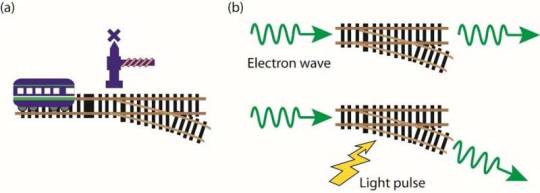Text
Researchers from The Hong Kong Polytechnic University (PolyU) have achieved a breakthrough power-conversion efficiency (PCE) of 19.31% with organic solar cells (OSCs), also known as polymer solar cells. This remarkable binary OSC efficiency will help enhance applications of these advanced solar energy devices.
The PCE (Power-conversion efficiency), a measure of the power generated from a given solar irradiation, is considered a significant benchmark for the performance of photovoltaics (PVs), or solar panels, in power generation. The improved efficiency of over 19% that was achieved by the PolyU researchers constitutes a record for binary OSCs, which have one donor and one acceptor in the photo-active layer.
Led by Prof. LI Gang, Chair Professor of Energy Conversion Technology and Sir Sze-Yen Chung Endowed Professor in Renewable Energy at PolyU, the research team invented a novel OSC morphology-regulating technique by using 1,3,5-trichlorobenzene as a crystallisation regulator. This new technique boosts OSC efficiency and stability.
Read more.
14 notes
·
View notes
Photo

Researchers build transparent conductors without expensive rare-earth indium
Purdue University researchers have created transparent organic conductors from patent-pending polymers that achieve the same results and properties as traditional conductors made from rare-earth minerals but are less expensive and can be created from more plentiful reserves.
Transparent conductors are critical components in light-emitting diodes, touch screens, solar cells and other optoelectronic devices. Indium tin oxide (ITO) is used in more than 95% of global transparent conductors. It conducts electric current through a device, which is disrupted when a person swipes or taps a touch screen.
Jianguo Mei, the Richard and Judith Wien Associate Professor of Chemistry in the Department of Chemistry, said touch screens are made of several layers, including a top layer of glass or plastic, a conductive layer beneath it, and a circuit board that reads the signals sent by the conductive layer.
“When a user touches the screen, their finger creates a disruption in the electrical field generated by the conductive layer,” Mei said. “This disruption is detected by the circuit board, which can then determine the location of the touch and interpret it as a command, such as opening an app or typing a message.”
Read more.
70 notes
·
View notes
Photo

Using a ball mill to speed up sublimation for testing gas interactions
A team of chemists affiliated with several institutions in Germany has found that using a ball mill can speed up sublimation needed for testing gas interactions. In their study, reported in the journal Chem, the group tested the use of a ball mill to see how it would impact sublimation.
A ball mill is a device with a spherical chamber into which heavy balls made of steel or other materials are placed. The chamber is connected to other parts that turn the chamber. When other materials are placed into the chamber with the balls and the chamber is turned, the balls are pulled up the walls of the chamber until gravity takes over, at which point they fall, crushing the other material.
In this way, as the chamber continues to spin, the secondary material can be crushed to produce a powder. In this new effort, the team looked to use the ball mill in a new way—to speed up sublimation, in which a material changes from a solid to a gas without first becoming a liquid. There are occasions when chemists wish to sublimate a material to a gas and then combine that gas with another gas to form a new material or to incite a reaction. Unfortunately, the process of sublimation is generally pretty slow, so the team wanted to test the idea of using a ball mill.
Read more.
10 notes
·
View notes
Photo

A special carbon molecule can function as multiple high-speed switches at once
For the first time, an international team of researchers, including those from the University of Tokyo’s Institute for Solid State Physics, has demonstrated a switch, analogous to a transistor, made from a single molecule called fullerene.
By using a carefully tuned laser pulse, the researchers are able to use fullerene to switch the path of an incoming electron in a predictable way. This switching process can be three to six orders of magnitude faster than switches in microchips, depending on the laser pulses used. Fullerene switches in a network could produce a computer beyond what is possible with electronic transistors, and they could also lead to unprecedented levels of resolution in microscopic imaging devices.
More than 70 years ago, physicists discovered that molecules emit electrons in the presence of electric fields, and later on, in certain wavelengths of light. The electron emissions created patterns that enticed curiosity but eluded explanation. This has changed thanks to a new theoretical analysis, the ramification of which could not only lead to new high-tech applications, but also improve our ability to scrutinize the physical world itself.
Read more.
57 notes
·
View notes
Photo

2023 February 18
Barred Spiral Galaxy NGC 1365 from Webb
Image Credit: NASA, ESA, CSA, Janice Lee (NOIRLab) - Processing: Alyssa Pagan (STScI)
Explanation: A mere 56 million light-years distant toward the southern constellation Fornax, NGC 1365 is an enormous barred spiral galaxy about 200,000 light-years in diameter. That’s twice the size of our own barred spiral Milky Way. This sharp image from the James Webb Space Telescope’s Mid-Infrared Instrument (MIRI) reveals stunning details of this magnificent spiral in infrared light. Webb’s field of view stretches about 60,000 light-years across NGC 1365, exploring the galaxy’s core and bright newborn star clusters. The intricate network of dusty filaments and bubbles is created by young stars along spiral arms winding from the galaxy’s central bar. Astronomers suspect the gravity field of NGC 1365’s bar plays a crucial role in the galaxy’s evolution, funneling gas and dust into a star-forming maelstrom and ultimately feeding material into the active galaxy’s central, supermassive black hole.
∞ Source: apod.nasa.gov/apod/ap230218.html
154 notes
·
View notes
Photo

What do oranges, coffee grounds and seaweed have in common? They outshine cotton in sustainable fashion
Ever considered the carbon footprint of manufacturing your favorite shirt?
The average cotton shirt produces 2.1 kilograms of carbon dioxide—but a polyester shirt produces over twice as much (5.5 kilograms). It might come as no surprise that the fashion industry is responsible for around 5% of global CO₂ emissions.
Some natural fibers can also take a heavy toll on the environment. Last week, for example, an ABC investigation revealed hundreds of hectares of the Northern Territory’s pristine tropical savanna had been cleared to make way for cotton farms, sometimes without permit.
So are there more sustainable textiles we should be producing and purchasing instead?
Research, including our own ongoing research, points to certain “non-traditional fibers” as new green alternatives. These include fibers produced from wastes—think coffee waste and recycled plastic bottles—as well as seaweed, orange, lotus, corn and mushroom.
Read more.
34 notes
·
View notes
Text
INTERNET NERDS
I NEED AN EXTREMELY NICHE AND SPECIFIC QUESTION ANSWERED
What is the material density of CrCoNi (equal portion HEA) compared to mild stainless steel: and what would the weight of a 1 m cubed block of CrCoNi be compared to a 1 m cubed block of stainless steel (which weighs 7,850 kg/m cubed)?
...Asking for, uh. A friend?;;
44 notes
·
View notes
Link
Emissions from copper-based antifouling paints are a well-known environmental problem. As much as 40 percent of copper inputs to the Baltic Sea come from antifouling paints on ships and leisure boats. According to a new study from Chalmers University of Technology, Sweden, this is completely unnecessary. When the researchers compared copper-based antifouling paint with biocide-free silicone-based paint, they found that the environmentally friendly alternative was best at keeping the fouling at bay.
‘This means that we now have a great opportunity to drastically reduce the release of the heavy metal into our sensitive sea. This is the first independent scientific study to show that silicone paint is more effective than copper-based paint in the Baltic Sea region,’ says Maria Lagerström, researcher in marine environmental science at Chalmers.
Together with colleagues at the University of Gothenburg, the Swedish Environmental Institute IVL and Chalmers, Maria Lagerström investigated whether biocide-free silicone paints on the hulls of ships and leisure boats are a viable alternative to copper-based bottom paints to combat fouling. The study was carried out over a year at three sites in the Baltic Sea region and the Skagerrak and the results have been published in the scientific journal Marine Pollution Bulletin.
Read more.
32 notes
·
View notes
Photo

Accurately tracking how plastic biodegrades
Modern agriculture uses a lot of plastic, especially in the form of mulch film that farmers use to cover field soils. This keeps the soils moist for crops, suppresses weeds and promotes crop growth.
However, it is usually very time-consuming and costly for farmers to collect and dispose of conventional polyethylene (PE) film after use. In addition, it isn’t possible to re-collect all of the thin PE films, as they tear easily. This means PE-pieces remain on and in the soil and accumulate there, because PE doesn’t degrade.
Biodegradable mulch film is a promising alternative, because—in contrast to PE film—it ideally does not to leave behind any polymer components in the soil environment. The biodegradable polymers it contains are deliberately designed so that microorganisms can use them to generate energy and build cell biomass.
The biodegradable polymers have intended chemical “breaking points” in their backbone structure. Naturally occurring microorganisms, such as those in soil, can release enzymes into their environment that attack these points in the polymers and break them down. The small degradation products released are then taken up by the microbes and ultimately respired to form the final product, CO2.
Read more.
23 notes
·
View notes
Photo

Saturday Morning Breakfast Cereal - Liberal Education
15 notes
·
View notes
Photo
Maybe help with solar panels over heating reducing performance
Issue.

Converting body heat into electricity: A step closer towards high-performance organic thermoelectrics
Can you imagine charging your mobile phone by simply using your body heat? It may still sound rather futuristic, but thermoelectrics can do it. Thermoelectrics is all about transforming heat into useful energy, mostly using inorganic materials.
Because of their mechanical flexibility, light-weight and low thermal conductivity, organic semiconductors have emerged as a promising material system especially for flexible thermoelectric applications. Efficient doping for charge-carrier creation is the key in thermoelectric device performance. Conventional bulk doping typically introduces disorder at high doping concentration limiting the electrical conductivity.
“In our study, we employed the modulation-doping approach to highly ordered organic thin films, where the dopant impurity is separated from the conduction channel. With this method, we are able to achieve highly efficient doping even at high doping densities without influencing the charge transport in the thin films,” explains first author Dr. Shu-Jen Wang from the Institute of Applied Physics at TU Dresden.
Read more.
24 notes
·
View notes
Photo

How to spot signs and symptoms of Breast Cancer
363K notes
·
View notes
Text
Watch "Chumbawamba - Tubthumping (Official Video)" on YouTube
youtube
0 notes
Text
“The witches danced ring dances in a direction opposite to the path of the sun, an ancient, symbolic rite. The Lutherans and Puritans forbade dancing because it evoked for them the spectacle of pagan worship.”
— Andrea Dworkin, Woman Hating; 1974
10 notes
·
View notes
Photo





Tailings.
At the Freeport-McMoRan copper mine in Morenci, Arizona.
The open pit copper mine here is one of the world’s largest. I have struggled to find a reference for how impossibly tall this man-made mountain of mine tailings is. The best I can do is estimate from topographic maps, with a guess of about 600 feet (180 meters) from the canyon floor to the top, or just taller than the Washington Monument. I have a long and growing list of places in Arizona I don’t want to be during an earthquake, and this pyramid of rock and debris is now high on the list.
157 notes
·
View notes
Photo

The third of seven children, Ettore DeGrazia was born in the Arizona mining camp of Morenci in 1909. His parents were Italian immigrants from San Pietro in Amantea, Italy. A copper miner, Domenic DeGrazia moved his family to Italy for five years when the mines closed, but moved back when production resumed in 1925. Happy Throwback Thursday!
5 notes
·
View notes







